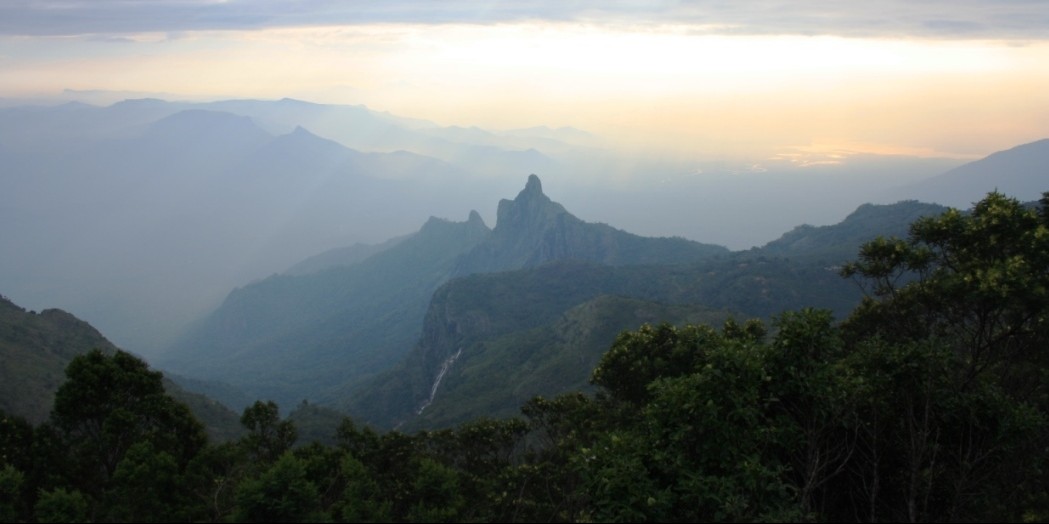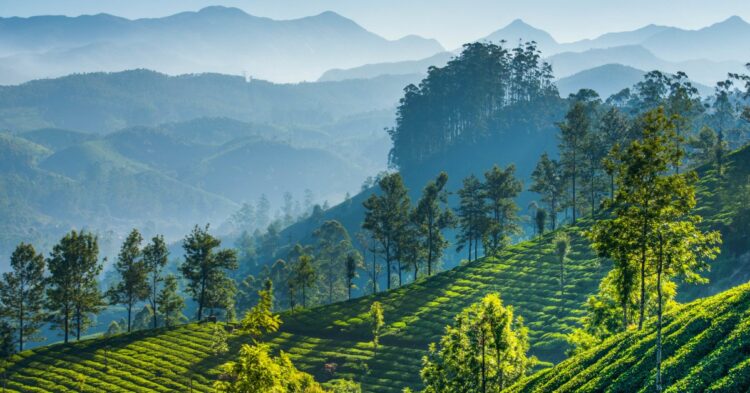The Nilgiris is one of the most diverse and captivating landscapes on earth; loaded with a variety of Flora and Fauna, about 3,300 flowering plants 132 of which are endemic to the biosphere can be found here during different seasons and more than 100 species of mammals, 350 species of birds, 80 species of reptiles and amphibians, 300 species of butterflies, innumerable invertebrates and more.
Once in every twelve years, the biosphere turns completely blue due to the gregarious blooming of the Strobilanthes kunthiana locally known as the Neelakurinji, in turn, bestowing upon the scintillating ‘Nilgiri’-its name and identity.

This is the first-ever biosphere declared by the Government of India that stretches into 3 different south Indian states of Tamil Nadu, Kerala, and Karnataka.
Many plant species such as Bryophyte, Pteridophytes, and Lichens are efficient collectors of water and can collect water even from the air.
The water they collect drips from them in the form of condensed droplets which stream their way into the generous fresh-water bodies like tributaries of the river Cauvery.
Regrettably, the Nilgiri biosphere (like many others) has also fallen victim to rampant human exploitation. It has been under tremendous pressure with several of its natural habitats being transformed into exotic plantations for monoculture and human settlements that have resulted in impetuous tree-felling and deforestation; consequently, rolling out an array of new problems like destruction, depletion, and degradation of the environment and its natural resources.
Indiscriminate clearing of forest is destroying the habitat of several species of animals and birds of the Nilgiris. Some of them like the Nilgiri wood pigeon, Nilgiri pipet and Nilgiri langur that are endemic to this region have hence become highly endangered.
Animals like the elephant, tiger, and leopard are moving closer to human settlements owing to the shrinking of forest areas and posing danger to native human life as well.

Amid the pre-existing haphazard situation, the announcement of the Largest Hydro-project (with a power generation capacity of 1,000 MW) in the Nilgiris called the Sillhalla Pumped Storage Project by Tamil Nadu Generation and Distribution Corporation comes as a tragic shock for environmentalists and native tribes of the Nilgiris.
The proposed Sillahalla Pumped Storage Project (PSP) area is located in the Nilgiris District of the southern Indian state of Tamil Nadu.
The upper reservoir is planned in Udhagamandalam & Kundah taluk and the lower reservoir is planned in Kundah taluk of the Nilgiris district.
The Upper dam is located on the Sillahalla stream which is a tributary of the Kundah River. There is no reliable hydro potential of this scale in Tamil Nadu therefore; Sillahalla Pumped Storage is the only feasible alternative available.
While on the one hand, the installation and construction process ensures employment for local people the threat of ecological destruction still looms over the landscape.

According to the Environment Clearance Report– about 315 hectares of land in total is proposed to be acquired for construction out of which 170 hectares (including forest cover) will get submerged potentially threatening the existence of endemic flora and fauna in that area; Notably, the proposition does not involve clearance under The Wildlife Protection Act of 1972 and its clearance under The Forest Conservation Act, 1980, is yet to be submitted as well.
Even though, the corporation has assured that the preservation of the ecosphere will occur in accordance with the Environmental Impact Assessment (EIA), it has still disclosed very little of how compensation and preservation plans would pan out, leaving environmental activists with furrowed eyebrows and gasps of disbelief yet again.
The Shola Forests and Grasslands, which were once the primary water source of Tamil Nadu and covered acres of hilltops and slopes, have been reduced to small tea plantations.
Hydroelectric projects and dams are a great threat as it submerges thousands of acres of forests and thus, they can’t be celebrated blindly because they generate temporary employment opportunities, since the impairment they inflict upon geography and topology will be undying.
















